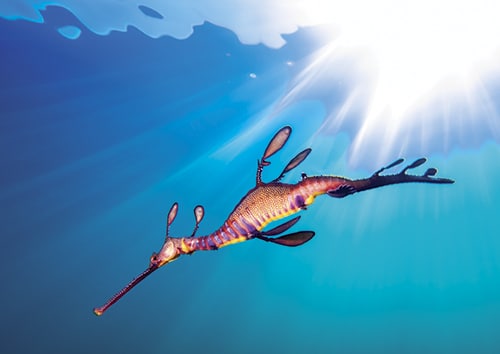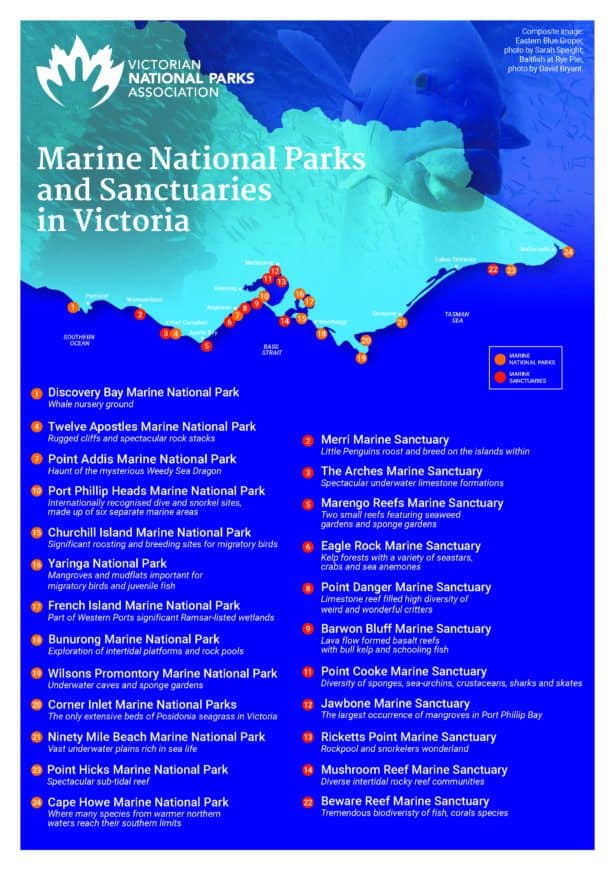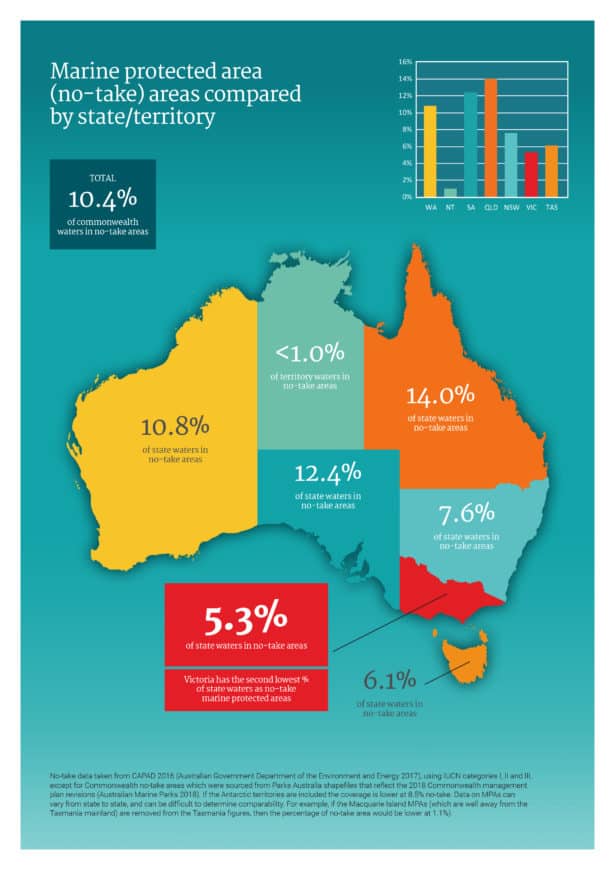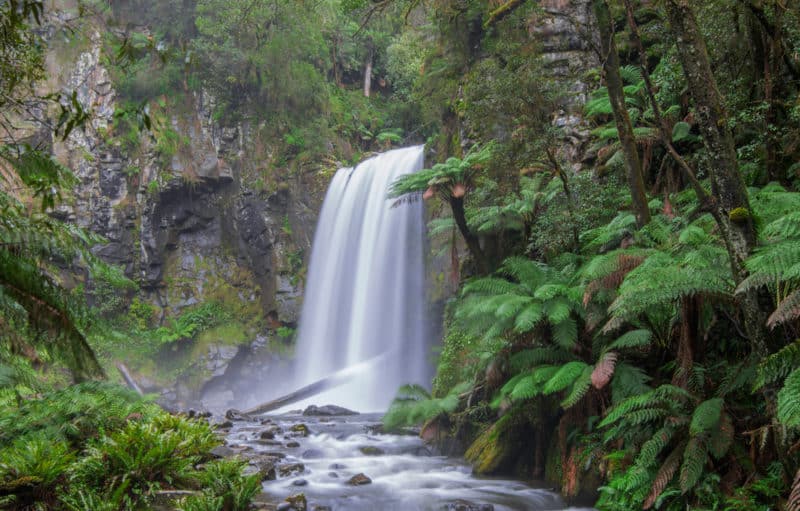Victoria’s marine national parks and sanctuaries stretch the coastline from Portland to picturesque Mallacoota.
The network is made up of 13 marine national parks and 11 smaller sanctuaries, covering 5.3 per cent of Victoria’s marine waters. All plants and animals in the network are protected from damaging extractive industries, like commercial fishing and fossil fuel exploration.

Our marine national parks protect some our most iconic and charismatic ocean dwellers: Weedy Sea Dragons, Eastern Blue Devilfish, Southern Fiddler Rays and the Eastern Blue Groper.
Marine national parks are great for people too as special places to connect with, explore, and learn about our marine landscapes and wildlife. But they also need our help to keep them safe.
Marine national parks and sanctuaries:
- help marine life withstand climate change impacts by reducing stressors
- protect and improve habitat and species diversity
- protect rare species and populations
- protect habitats from oil exploration and extraction, aquaculture and industrial fishing
- create opportunities for education, research and tourism
- provide scientific reference areas as benchmarks
- help achieve sustainable fisheries
- store large amounts of carbon, especially in saltmarshes, seagrass meadows and mangroves.
Where are we at now?
International bodies, like the IUCN, say at least 30 per cent of the marine environment should be in highly protected marine parks by 2030. This would give our oceans the fighting chance to adapt to climate change and buffer the growing list of threats facing them.

In Victoria, a mere 5.3 per cent of our waters are given that protection (in Port Phillip Bay it’s under 1 per cent). But the small size of the area protected is not the only problem. Marine national parks need to be in the right places to protect the wildlife and habitats that are under threat.
Establishing the marine national parks network in 2002 was a remarkable achievement, but there are significant gaps and areas in need of better protection.
A team of marine experts has identified which areas desperately need greater protection. Their analysis considered critical habitats, values and threats in our marine waters. They identified gaps in our current network and recommended the expansion of some existing parks and the addition of new parks.
They recommend 20 marine conservation priority areas for inclusion in our marine national park network. Bridgewater Bay, Deen Maar (Lady Julia Percy Island), Cape Otway, Point Lillias to Kirk Point, Crawfish Rock, Anderson Inlet, the Gippsland Lakes and Gabo Island. (See our Nature Conservation Review).
Despite this, in 2019, the then Victorian Government ruled out consideration of new marine national parks, stating “It is current government policy that no new marine national parks will be created”.
Our report, Marine Protected Area Review 2019, includes key recommendations that will enhance our highly valued marine national parks.
Under state, national and international agreements, Victoria must maintain, enhance and monitor a Comprehensive, Adequate and Representative network of marine national parks.
Leading scientists from around the world agree that establishing marine national parks is the best way for aquatic ecosystems to survive and thrive. We continue to work with the Victorian community to give marine and coastal wonders the protection they deserve.
More information
- Marine National Parks Podcast
- Marine Protected Area Review 2019
- Threats to marine national parks
- Victoria’s new Marine and Coastal Policy, Park Watch magazine, September 2019
- Marine and Coastal Issues Paper full marine science report (and appendices)
- Marine national parks and sanctuaries fact sheet
- Beautiful Surprises video
- Dive into Victoria’ marine national parks video

